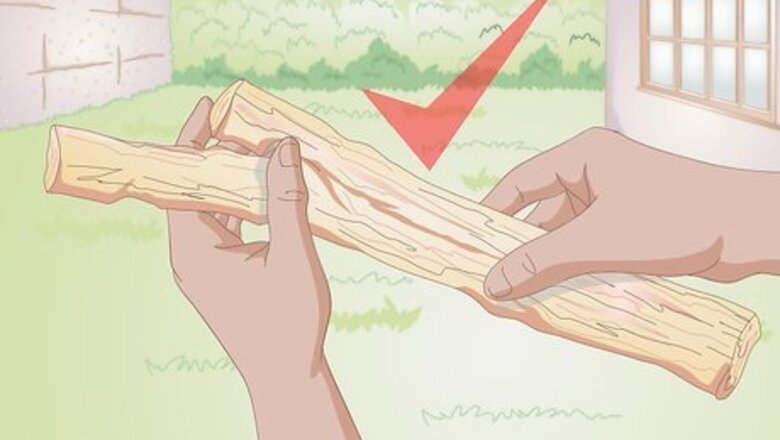
views
X
Research source
You can make your own chew sticks for your hamster at home in order to keep your hamster healthy and happy.
Choosing the Right Kind of Wood
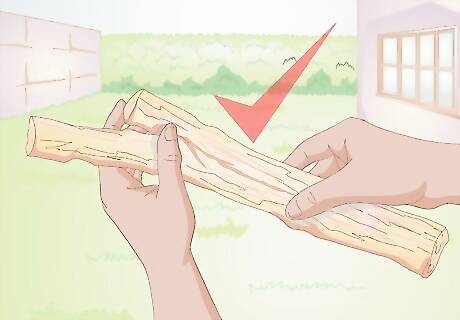
Use natural wood. It is important that the wood you use to make the chew sticks is unpainted and untreated. Chemicals found in paint and pesticides used to treat some wood could be extremely toxic to your hamster. Skewer sticks, that you can typically purchase in your grocery store, offer a good option since you know they are safe for human use, which means they are also safe for your hamster. Chew sticks purchased in a pet store are typically made of balsa, so if you want something similar to what you find in the pet store, search for those. If you want to use natural wood from the outdoors, clippings of small twigs from fruit trees are safe for hamsters. However, you should be certain that the tree was not treated with chemicals or pesticides.
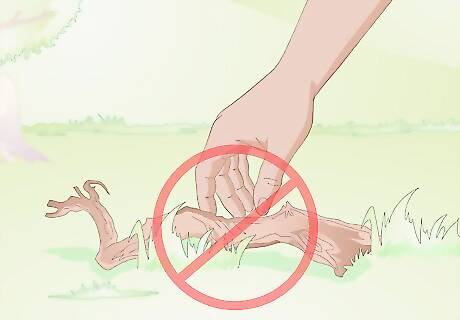
Avoid sticks you find in your backyard. While it is safe to give your hamster fresh clippings from fruit trees, avoid using wood you find laying around on the ground outside, which could contain parasites that can harm your hamster.
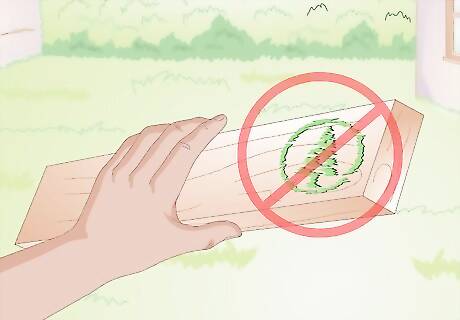
Avoid woods that contain oils. Certain types of wood, such as cedar and pine, can contain oils that are harmful to the hamster respiratory system. Choose wood that is oil free. Also avoid wood from the yew and oleander tree as these are poisonous for hamsters.
Preparing the Chew Sticks
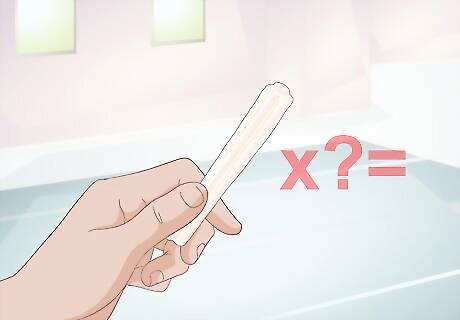
Decide how many chew sticks you want to make. You will need to create bunches of 3 skewers in order to make the sticks thick enough to be interesting for your hamster. With a package of 20 skewers, you can make about 13 chew sticks.
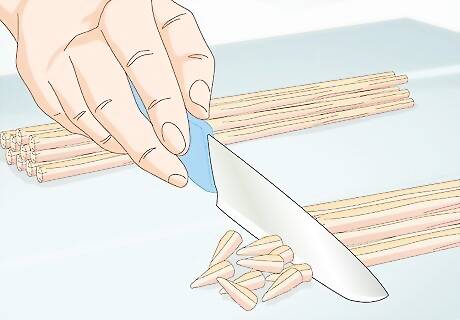
Cut your skewers. It is important to remove the pointy ends of the skewer. Use a very sharp knife or a pair of gardening scissors to snip off the pointy ends.
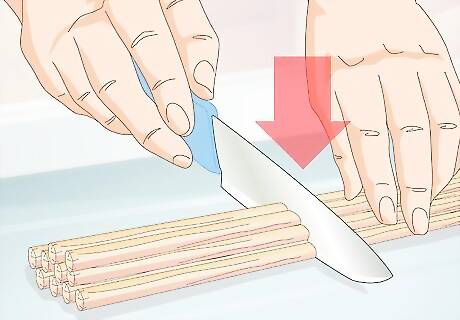
Cut the skewers in half. Your hamster will like the chew sticks better if they are shorter, and thus easier to grab. Cut each skewer in half using the gardening scissors.
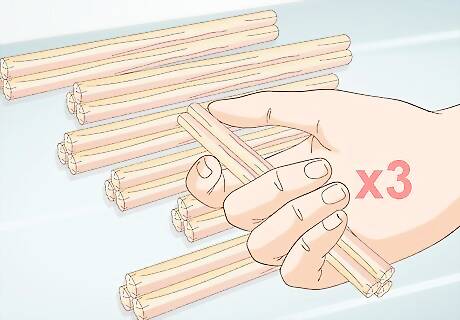
Create bunches of 3 skewers. Eventually, you will glue the sticks together, but begin by laying 3 skewers next to each other on a piece of parchment paper or cutting board.

Create hamster safe glue. It is important that the “glue” you use to hold the sticks together is safe for your hamster. A safe glue can be made by mixing together 1/2 cup white flour and 1/2 cup water until a thick paste is formed. If you want to make your chew sticks more interesting for your hamster, add a splash of fruit juice such as apple, blueberry, cherry, peach or mango to the glue. Additionally, you can also add tiny bits of dried fruit to the paste.

Glue the skewers together. Generously coat each bunch of skewers in the glue using a paint brush.
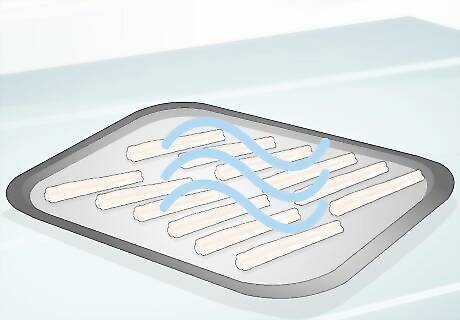
Allow the chew sticks to dry overnight. You will want to allow the sticks plenty of time to dry so that they do not fall apart inside your hamster’s cage. You might also want to coat the other side of the sticks in glue. If so, wait until the first side is dry, then flip each bunch over, and repeat the process of brushing on the glue.
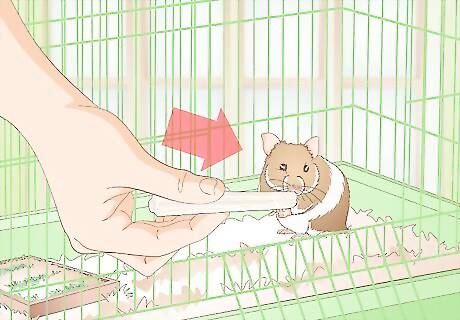
Give your hamster his chew stick. In the evening, when your hamster is most active, give your hamster a few of the chew sticks.
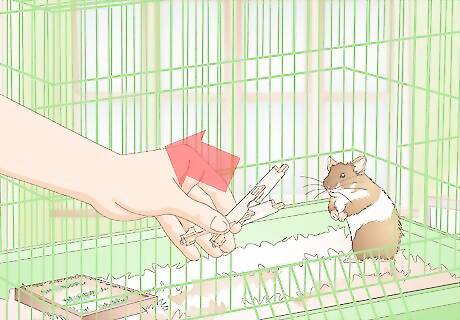
Replace the chew sticks. When you see that your hamster is no longer using the chew stick, if it has been completely worn down, or if it is damaged, give your hamster a new chew stick. Do not leave old chew sticks in your hamster’s cage as he might injure himself with the sticks.
Considering Alternatives
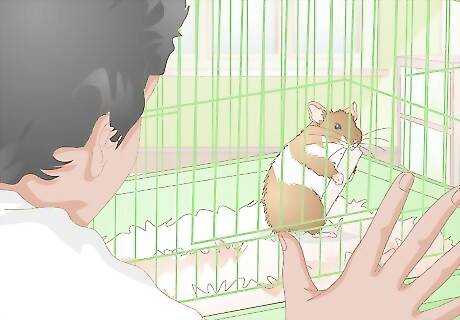
Observe your hamster’s reaction to the sticks. Does he seem to use them frequently or does he ignore them? If your hamster does not enjoy using the sticks, you should search for alternatives in order to keep your hamster healthy. Try rubbing the sticks with a carrot. Rubbing the stick with a carrot coats the stick in a flavor that hamsters enjoy. Coat the stick with a bit of honey. Coating the stick in honey shows your hamster that the stick is something he can and should eat. However, do not use this trick often, as your hamster may refuse to use the stick unless it has honey on it. Hamsters can be susceptible to diabetes if they consume too much sugar. Shave off the outer layer of the stick. Using a small, sharp knife, wittle away the top layer of the stick. This releases a strong wood scent that may be appealing to your hamster.

Try giving your hamster dog biscuits. If your hamster does not enjoy the sticks, it is safe to give him dog biscuits as long as they do not contain garlic.
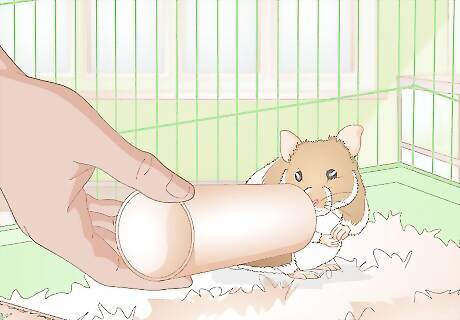
Give your hamster a paper towel tube. This offers a good option for chewing, and hamsters also love to crawl inside the tube. Thus, this option offers more than one activity for the hamster.
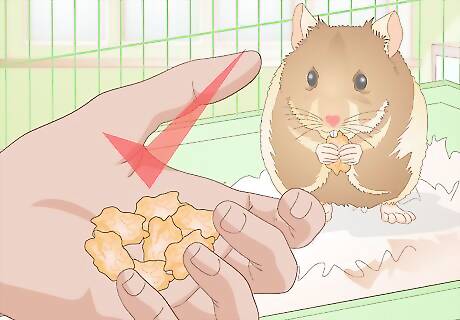
Use hard cereal. In a pinch, you can also give your hamster a cereal such as rolled oats to chew on.



















Comments
0 comment